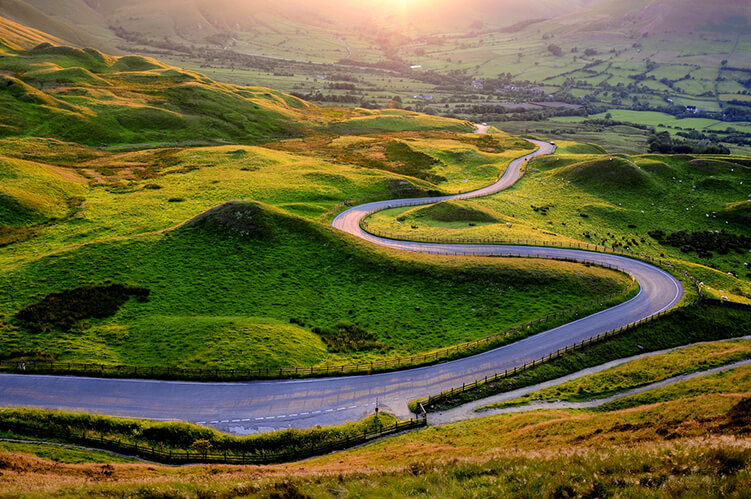
The UK's Most Dangerous Road Trip
General
cidents happen. Fact. Sometimes someone is to blame. But in most cases, they happen because you're simply in the wrong place at the wrong time.
There are obvious ways that you can reduce the chances of being involved in a road accident; drive sensibly, stick to the speed limit and be mindful of other road users.
However, open data reveals that there are other factors that can increase the likelihood of an accident.
Have you ever questioned how safe you really are on the road? How many road accidents involve your brand of car? Does driving at 70mph really increase the likelihood of an accident?
We've analysed open data on road statistics from 2011-2015 to identify the most common factors of UK car accidents.
Top 10 Most Dangerous Areas to Drive
By analysing the number of casualties caused by road accidents in each police force area across the UK, we can reveal which areas of the UK are most dangerous to drive in.
With 37,153 casualties across 5 years, the West Midlands emerged as the riskiest area to drive.
The South of the UK accounted for a majority of accidents, with West Yorkshire, Greater Manchester and Lancashire revealed as the most dangerous areas in the North of England.
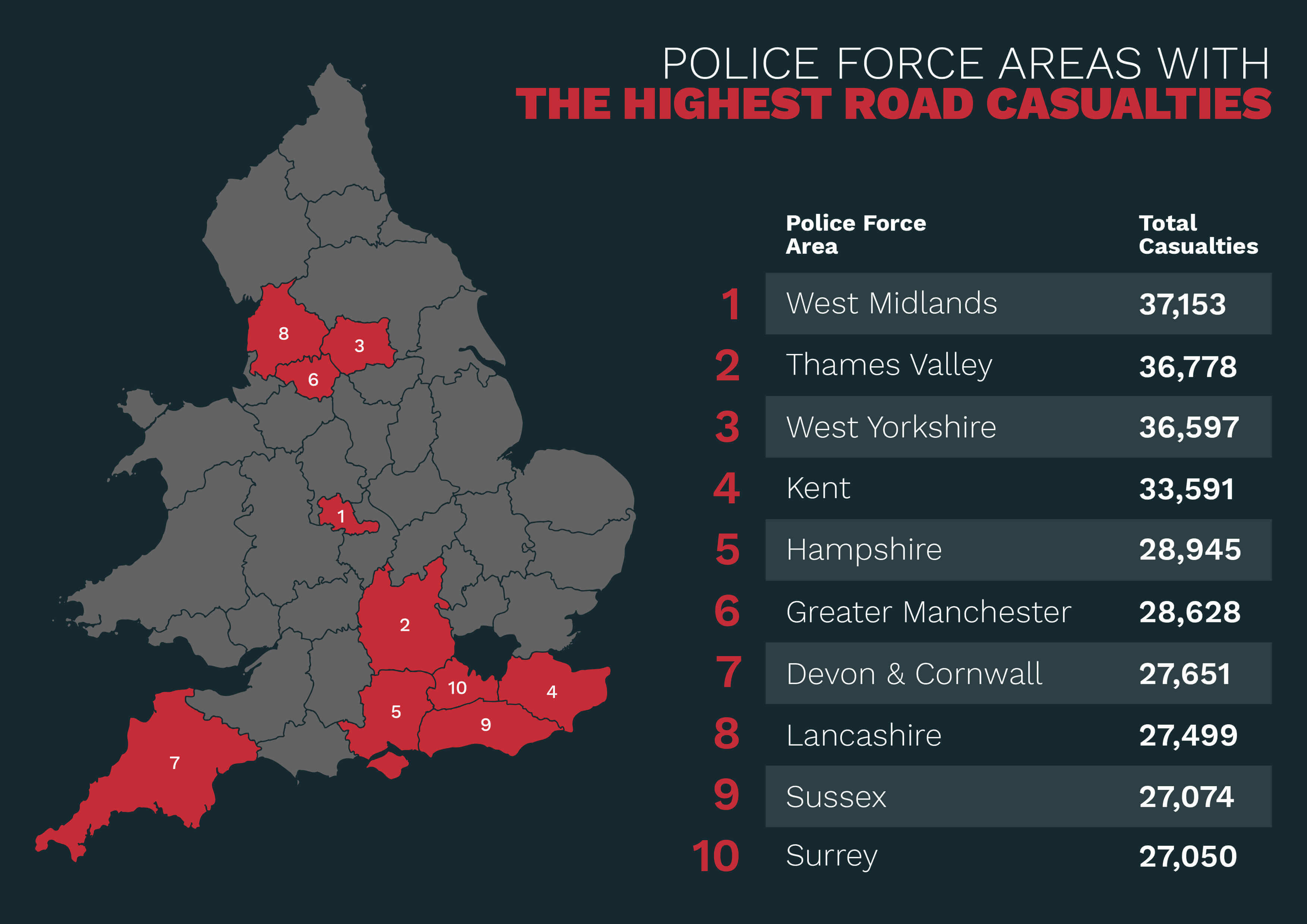
So these are most dangerous places to drive in the UK, but which are the safest?
Scotland is without a doubt the safest place to drive when compared with England, Wales and Northern Ireland, claiming 9 out of 10 spots with the least casualties.
Top 10 Safest Areas to Drive
1. Dumfries & Galloway
2. City of London
3. Argyll & West Dunbartonshire
4. Fife
5. Renfrewshire & Inverclyde
6. Forth Valley
7. Highlands & Islands
8. Ayrshire
9. Tayside
10. Aberdeenshire & Moray
Top 10 Most Dangerous Car Brands
If you drive a Volvo you're more likely to have a car accident. That's according to our analysis of popular car brands anyway, which compares the number of accidents in relation to the number of cars that are on the road.
If you're looking to drive something a little less risky, you might want to opt for a Mercedes, Dacia or Kia.
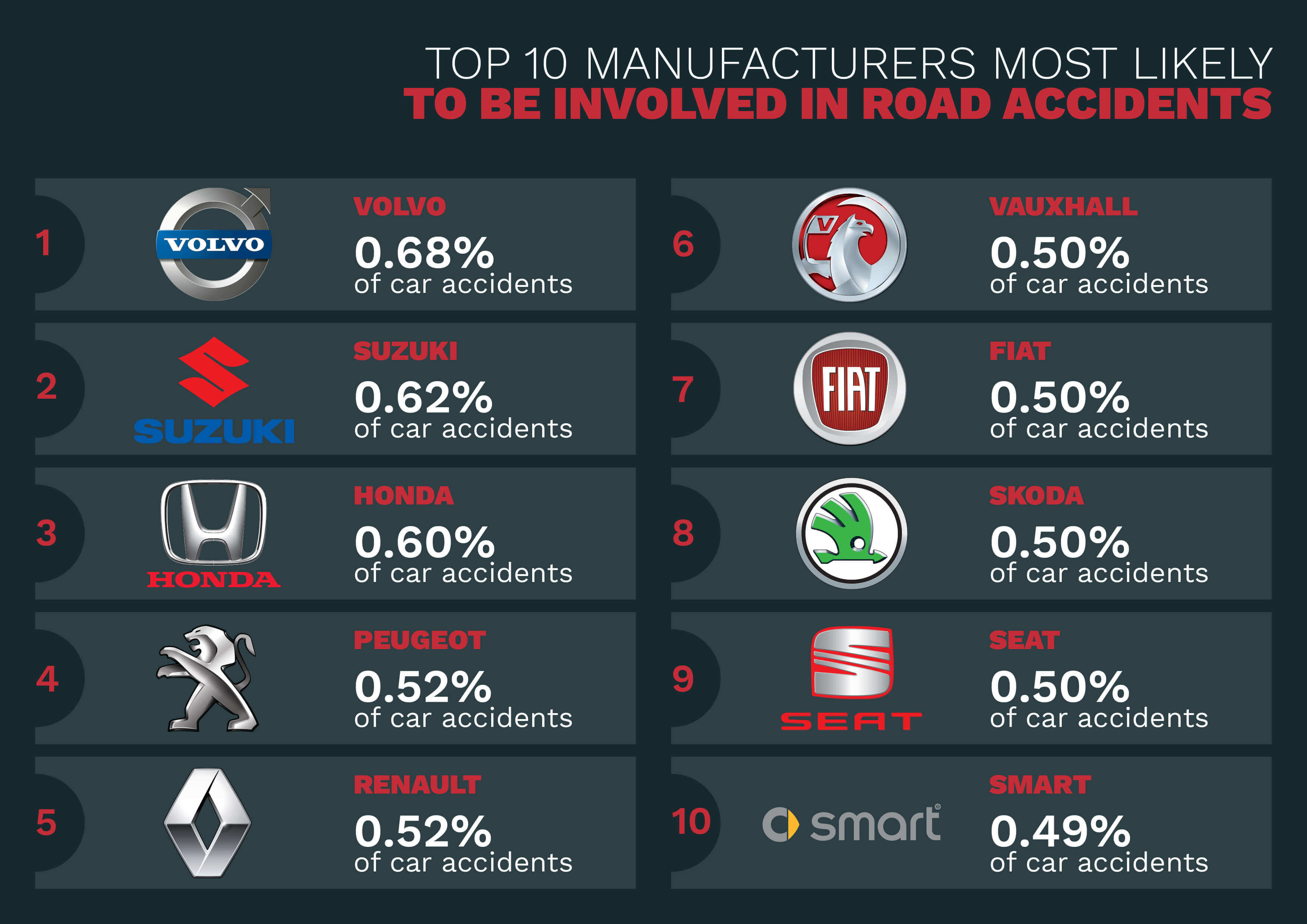
The Most Dangerous Speed Limit
Driving in areas that have higher speed limits doesn't necessarily increase the risk of having an accident. In fact, more accidents occur in 30mph zones. This is probably due to the fact that there are more 30mph zones than any other speed limit. The level of risk in 30mph zones is also increased due to the number of hazards; pedestrians, traffic lights, roundabouts, they all cause lapses in concentration.
Interestingly, despite the 70mph speed limit, Britain's motorways account for just 7% of road accidents across the UK. Single carriageways at 60mph proves to be the more dangerous higher speed, accounting for 26% of accidents.
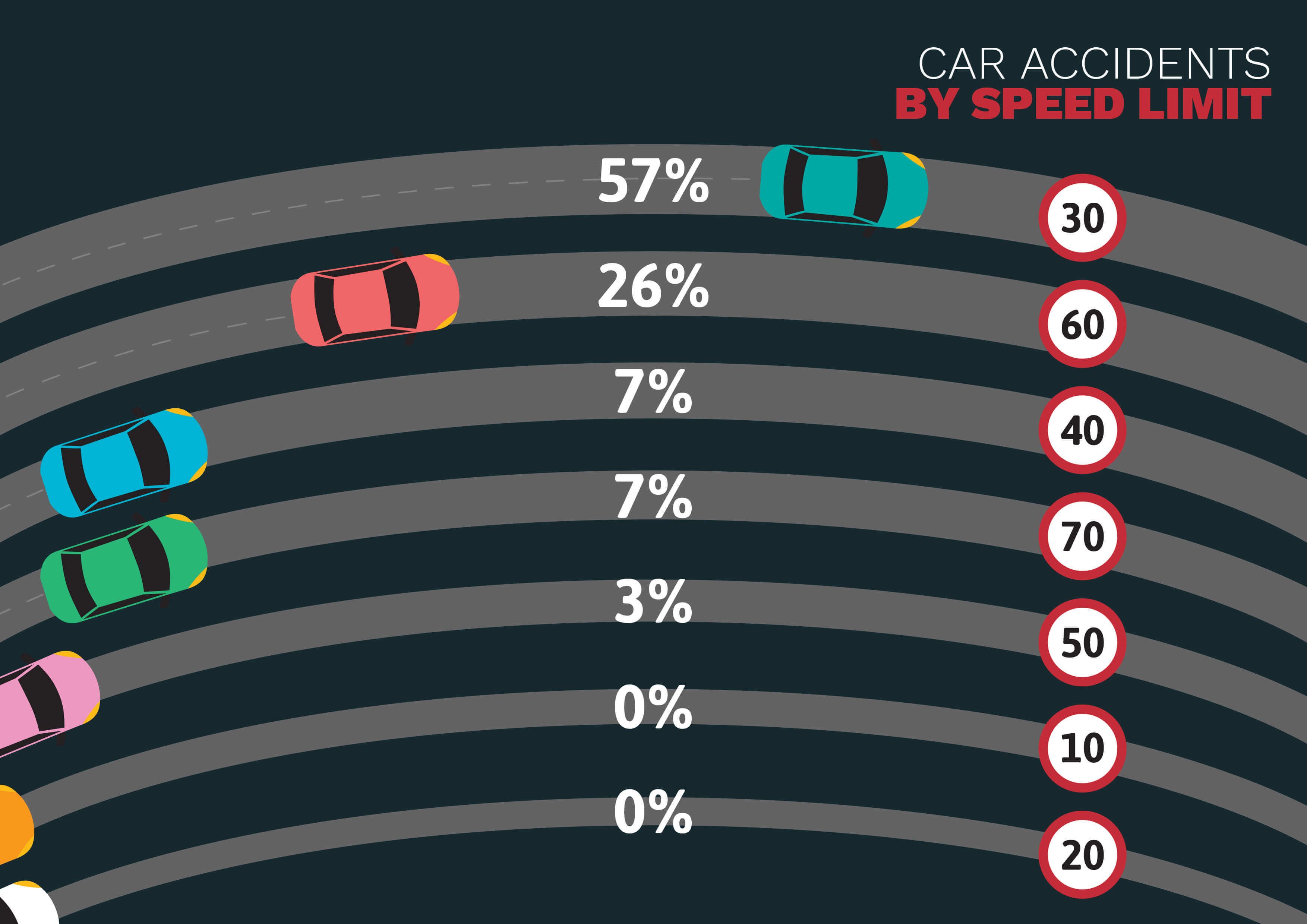
The Most Dangerous Day of the Week
According to data, there are two days of the week when drivers should be more alert; Thursday and Saturday. Together, they account for 32% of accidents. Only 11% of accidents happen on a Monday, making it the safest day of the week to travel on Britain's roads.
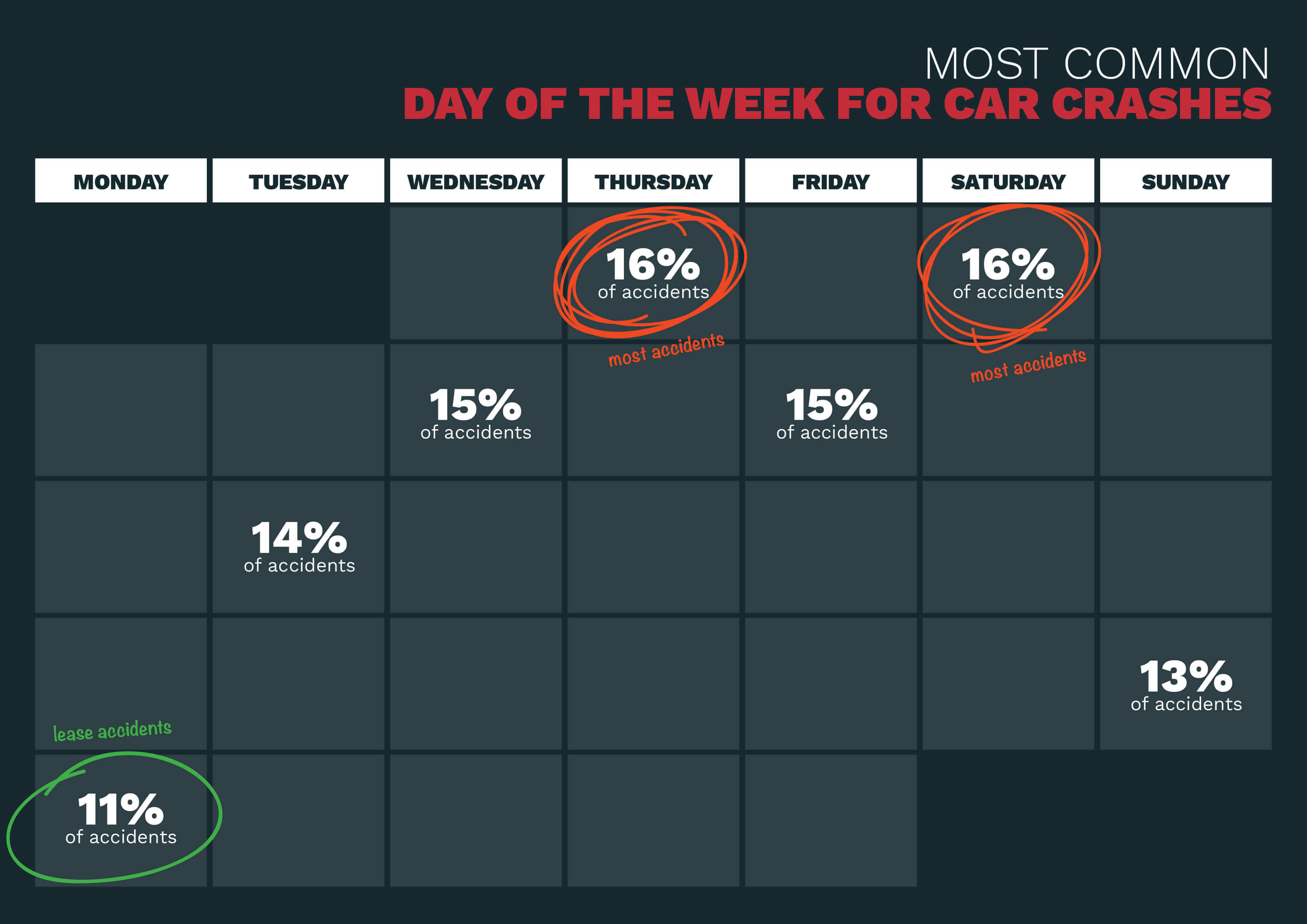
Other Interesting findings
Gender
Our data analysis revealed that men are much more likely to become a casualty due to a road accident when compared to women.
• 65% of all road casualties are male
Age
The likelihood of being involved in a road accident decreases with age. Those aged 16-25 accounted for 28.15% of road accident casualties from 2011-2015.
The good news, is that out of 100,000 casualties only 780 are fatal. You have a 0.78% chance of dying in a road accident.
So what did we learn from this analysis?
If you're a male aged 17-25, don't drive a Volvo in the West Midlands on a Thursday or a Saturday; especially in a 30mph zone.
Methodology
Data was taken and analysed from https://data.gov.uk/dataset/road-accidents-safety-.... Data from 2011-2015 has been collated. Please note that data from 2016 is not yet available.

